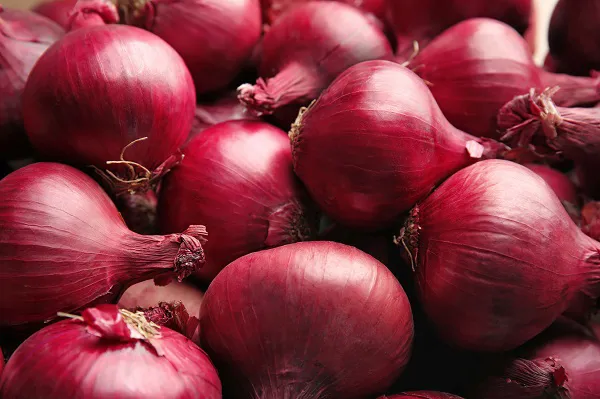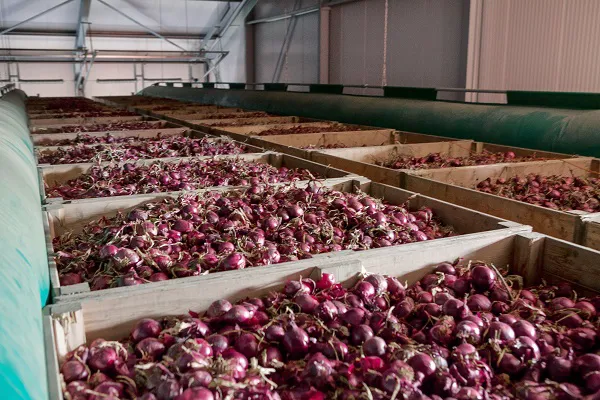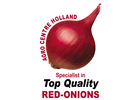With about 90% of its activities revolving around the red onion trade, Agro Center Holland is an exception in the Dutch onion trading sector. "There are some big companies that trade more red onions than we do, but I think we're the only ones in the Netherlands that sell more red than yellow onions," begins Carl van de Wiel.

He was initially quite concerned about the new onion season. "There has been expansion upon expansion in red onions, not only in the Netherlands but at European and global levels too. You then basically need a crop failure to create enough sales. And that's what happened. Across the board, red onion yields are disappointing. That's true for anywhere they're loading in the Netherlands and I hear the same thing from my European business relations. Especially in the south, the abundant spring rain destroyed many plants on some plots. Those that survived had more room to grow, so sizes are still reasonable, but yields are generally pitiful."
"These low yields are, however, benefiting sales prospects. We're not hectic, but red onion demand is good for the time of year. March and April are usually our peak months. The planting season is done, and we've switched entirely to seed onions, which are suitable for distant destinations. Demand is broad, including from Central and South America and Africa, but Germany and the United Kingdom are also well on the market," Carl says.
 photo: www.holland-oninons.org
photo: www.holland-oninons.org
"In countries like Germany and Poland, productions are definitely far lower too. I hope many countries won't be able to store their onions for a long time this year. That will leave us as somewhere with good onions in storage. As far as I know, India is the only place where this crop hasn't failed. That could lead to demand from Asian countries completely exploding, as we saw a few years ago."
"Prices are good, with dry, with stored red onions currently selling for around €0.34/€0.35. That's roughly in line with yellow onions. Incidentally, red and yellow onion prices don't affect each other. But African buyers, for example, won't pay more for red onions than yellow ones. If you charge more for red onions, you won't sell anything there. Now that prices are at a similar level, those opportunities are available," explains Carl. According to him, the onions' quality isn't a problem either.
 photo: www.holland-oninons.org
photo: www.holland-oninons.org
"We've had a nice summer, and growers who could irrigate sufficiently have generally gotten nice onions off the land. There is some talk of Fusarium pressure, but I don't think those batches will affect the overall market situation. The shallot market, too, is very healthy. Those were all harvested before the rain, and we have good quality white shallots available. Plus, that market has stabilized recently. There were times when you couldn't give this product away; in recent years, however, the shallot market has been more stable, with healthy prices."
Supplying high-quality Dutch red onions year-round is still a dream for now. "Last year, we ran out by mid-June; normally, we continue until the first or second week of July. You can't yet store red onions well all year, but I don't consider that such a problem. Egypt always steps into that gap in late May with better quality onions. They do well, too, although many companies still prefer Dutch red onions then. Once the Dutch onion sets come back on the market, prices drop again," says van de Wiel.
"This year's transition went very smoothly. There are sometimes still surpluses on the market. However, this year, there was so much demand worldwide that the Egyptians could also sell their onions well elsewhere, so they played it safe."
These days Carl has all his red onions optically sorted. "I'm very excited about that. This technique still has final touches that need to be added, but I believe it's the future. After all, you can guarantee healthy onions, internally," he concludes.
Carl van de Wiel Agro Centre Holland
Agro Centre Holland
Noordseweg 11
4772 PG Langeweg
Tel: +31 (0)168 371230
info@red-onion.com
www.red-onion.com
